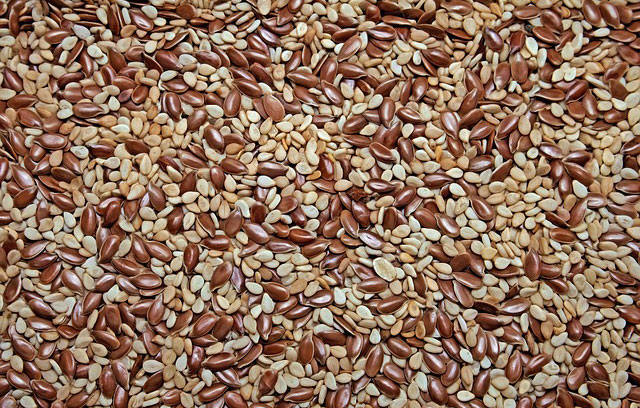Linseed oil, derived from flax seeds, possesses significant value, finding applications across diverse industries. This analysis examines the global and Russian linseed oil markets. The examination includes production trends, key players, consumption patterns, and future market prospects.
Global Leinoil Market: An Overview
The global linseed oil market continues its expansion, driven by rising demand. This demand stems from the paints, coatings, and linoleum industries. Moreover, growing awareness of linseed oil’s health benefits further fuels growth. Market reports forecast continued expansion in upcoming years.
Globally, linseed oil production volume reached significant levels in 2023. The growing preference for eco-friendly products contributed. The paints and coatings industries actively seek sustainable alternatives. These industries are increasingly incorporating linseed oil into their formulations.
Major Producing Regions
Several countries dominate the global linseed oil production landscape. Key producers include Russia, Kazakhstan, China, and several European nations. These countries collectively account for the majority of global output.
- Russia: Russia stands as one of the largest linseed producers globally. Substantial flaxseed cultivation supports this leading position. Russia’s favorable agricultural conditions are the reason.
- Kazakhstan: Kazakhstan has emerged as a prominent player. Increased investment in agricultural technology supported this. Consequently, linseed production has seen a substantial rise in Kazakhstan.
- China: China remains a significant contributor to global linseed output. However, domestic consumption also plays a crucial role.
- Europe: Several European countries contribute to the global linseed oil market. Favorable policies and growing demand support production in Europe.
Consumption Patterns
Linseed oil finds application across a range of industries, thus making it important. The paints and coatings sector represents the largest consumer. Linoleum manufacturing and animal feed are also significant consumers. A growing segment uses linseed oil in nutritional supplements.
- Paints and Coatings: Linseed oil serves as a key ingredient in paints, varnishes, and coatings. It imparts durability, flexibility, and weather resistance.
- Linoleum: Traditionally, linoleum manufacturing relies heavily on linseed oil. While synthetic alternatives exist, linseed oil retains its importance due to its natural properties.
- Animal Feed: Linseed oil’s nutritional benefits make it a valuable addition to animal feed. It enhances the omega-3 fatty acid content in animal products.
- Nutritional Supplements: Increasing awareness of omega-3 fatty acids boosts the demand for linseed oil in supplements.
Russian Linseed Oil Market: A Detailed Look
The Russian linseed oil market showcases robust growth, mirroring global trends. Russia’s extensive flax cultivation provides a strong foundation. Furthermore, growing domestic demand supports the market.
Production and Export Dynamics
Russia is a leading producer and exporter of flax seeds and linseed oil. Favorable climate conditions and agricultural practices support high yields. Moreover, government initiatives promote flax cultivation. Russian linseed oil finds markets in Europe, Asia, and other regions.
In 2023, Russia experienced a substantial harvest of flax seeds, exceeding previous years’ figures. Consequently, linseed oil production also increased significantly. Exports of linseed oil generated substantial revenue for the Russian agricultural sector.
Key Players in the Russian Market
Several companies dominate the Russian linseed oil market. These include major agricultural holdings and processing plants. These companies invest heavily in modernizing their production facilities. Consequently, they can meet both domestic and international demand. Examples of key players are “RusAgro,” “Cherkizovo,” and several regional agricultural enterprises.
Domestic Consumption and Applications
The Russian domestic market consumes a significant portion of linseed oil production. Paints and coatings, animal feed, and the food industry are the primary consumers. Furthermore, the increasing popularity of natural and organic products drives demand.
- Paints and Coatings: The Russian construction and renovation sectors drive demand for linseed oil-based paints and coatings.
- Animal Feed: Linseed oil enhances the nutritional value of animal feed, improving livestock health.
- Food Industry: Linseed oil finds limited use in the food industry, primarily in specialized products. However, this segment has potential for future growth.
Global Leinoil Market: Price Trends and Market Factors
Linseed oil prices are subject to fluctuations influenced by several factors. These factors include flaxseed harvest yields, global demand, and currency exchange rates. Moreover, transportation costs and geopolitical events play a role.
In recent years, linseed oil prices have exhibited volatility. Factors such as adverse weather conditions in key producing regions influence prices. Additionally, fluctuations in the Russian Ruble exchange rate impact export competitiveness.
Challenges and Opportunities
The linseed oil market faces both challenges and opportunities.
- Challenges: Competition from synthetic alternatives presents a challenge. Price volatility and dependence on weather conditions also pose challenges.
- Opportunities: The increasing demand for sustainable and natural products creates opportunities. Expanding applications in new industries also create opportunities. Developing value-added linseed oil products presents further opportunities.
Global Leinoil Market: Future Outlook and Projections
The global and Russian linseed oil markets are poised for continued growth. This growth is driven by increasing demand for sustainable and healthy products. Technological advancements in processing and refining also support growth. Market analysts project a steady increase in linseed oil production and consumption.
Specifically, the demand for linseed oil in the paints and coatings industry is expected to rise. Furthermore, the growing awareness of linseed oil’s health benefits should boost demand. The Russian government’s support for agricultural development will further stimulate growth.
Sustainability and Environmental Considerations
Sustainability is becoming increasingly important in the linseed oil industry. Environmentally friendly production practices are gaining traction. Therefore, consumers are demanding sustainably sourced linseed oil.
Flax cultivation offers several environmental benefits. It requires minimal pesticides and fertilizers. Furthermore, it can improve soil health. Sustainable practices enhance the long-term viability of the linseed oil industry.
Global Leinoil Market: Conclusion
The global and Russian linseed oil markets present a dynamic landscape. They are characterized by growth opportunities and challenges. Russia’s strong position as a producer and exporter supports the market. Continued innovation, sustainable practices, and market diversification are crucial. These are crucial for realizing the full potential of the linseed oil market. This applies to both globally and specifically within Russia. The linseed oil market appears to show potential for expansion in years to come.
Source: AGROEXPORT (Russia)

